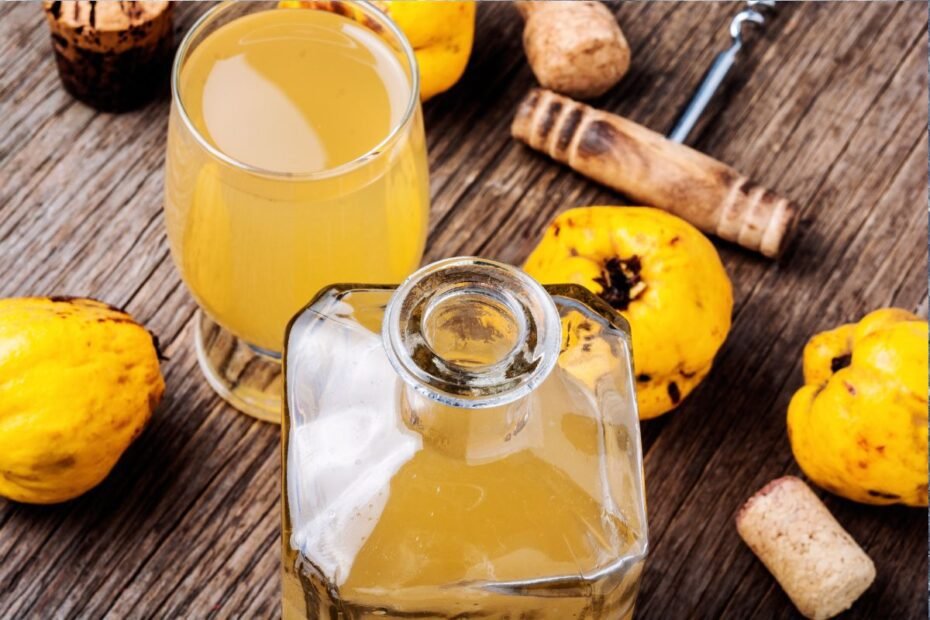Late spring marks the beginning of quince blooming, while in autumn, you can harvest the fragrant, brightly yellow or greenish, small, apple-like fruits. Japanese quinces are unique fruits, often compared to lemons due to their acidity. What makes these lemon-like fruits beneficial? What dishes and drinks may you prepare using them? One option is quince juice. We will discuss quince juice’s benefits, preparation, and use.
Japanese Quince—Like a Lemon
Japanese quince, Chinese quinces, or flowering quinces (Chaenomeles species in Latin) belong to the Rosaceae family and the Maloideae subfamily of plants. These flowering quinces (not a quince Cydonia oblonga) originate from Southeast Asia and the Mediterranean. They were cultivated in ancient Greece and Rome, where they symbolized love and fertility.
People have been growing flowering quinces since the late 19th century. However, they only became widespread after another century. The most commonly cultivated variety is the Japanese quince (Chaenomeles japonica). This is a thorny shrub, spreading out and growing up to one meter in height. It blooms with bright red or orange flowers and bears greenish-yellow, apple-like fruits.
Even when ripe, people rarely consume fresh Chinese quince fruits. They are known for their solid, firm flesh and highly sour, astringent taste. Flowering quinces are typically eaten after thermal processing. They are used to make jams, syrups, and, notably, juice, which can serve as a substitute for lemon juice.
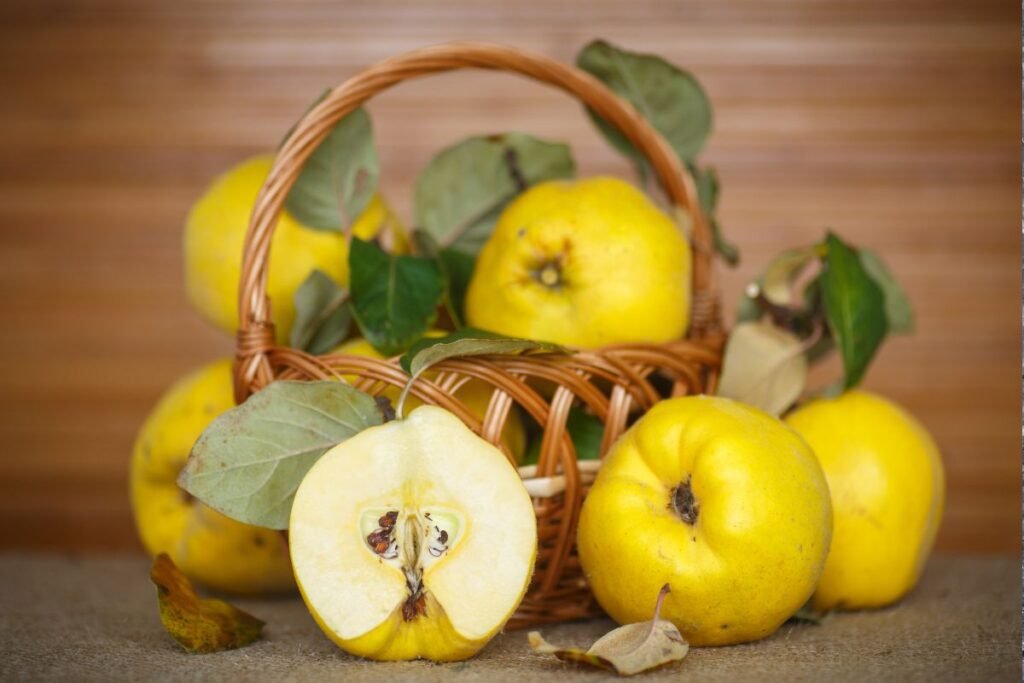
Japanese Quince—Highly Valuable Fruits
Japanese quince is rich in C, E, P, and B-group vitamins, various plant acids, pectins, and tannins. It also contains essential minerals such as calcium, potassium, cobalt, phosphorus, iron, magnesium, and copper. The peel of the Japanese quince is abundant in essential oils, while its seeds are rich in mucilage, glycosides, and tannins.
Chinese quince boasts numerous medicinal properties, including antioxidant, anti-inflammatory, antimicrobial, and anticancer effects. While folk medicine has been using Japanese quince for centuries, scientific research on its health benefits is still relatively new.
Some studies suggest that defined antioxidants in Japanese quince, including flavonols such as quercetin and kaempferol, can reduce inflammation and protect against chronic cardiovascular diseases.
Japanese Quince Juice—A Tasty and Valuable Condiment
Japanese quince juice is classified as a condiment rather than a beverage. Few would dare drink it pure, primarily because it is highly acidic. Essentially, it rivals lemon juice, which is not unpalatable when consumed pure and is also not recommended.
However, preparing fresh Japanese quince juice is worthwhile. It can be used as a healthy condiment, adding a fragrant tartness to food or drinks. Persons know how to transform Japanese quince juice into syrup, which enhances beverages and desserts.
Japanese Quince Juice Eases Nausea and Reflux in Pregnant Women
Feeling nauseous and experiencing vomiting are frequent symptoms in the early stages of pregnancy. Limited clinical studies confirmed that Japanese quince juice can help alleviate these unpleasant conditions.
In one study involving 76 pregnant women, scientists observed that one tablespoon (15 ml) of Japanese quince juice syrup significantly reduced nausea more effectively than 20 mg of vitamin B6. Additionally, Japanese quince juice benefits include easing reflux in pregnant women.
Another study with 137 pregnant women suggested that a 10 mg dose of Japanese quince juice syrup taken after meals is just as effective in reducing symptoms of gastric reflux as traditional medications.
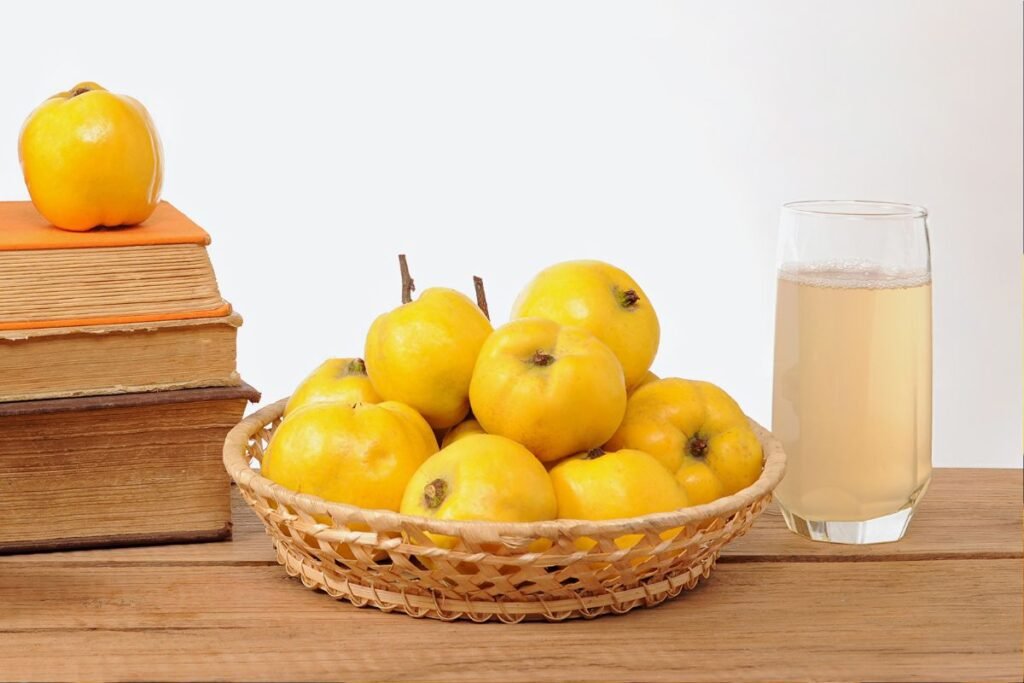
Fresh Japanese Quince Juice
If you have fresh Japanese quince at home, you can prepare a valuable stock of juice wherever needed. You should consume fresh Japanese quince juice immediately. If you prepare a larger quantity, freeze it to have a supply on hand.
You need:
- Fresh Japanese quince
- A juicer
Preparation:
Wash the Japanese quince thoroughly. There’s no need to peel them. Slice the fruits into quarters along their length and take out the seeds.
Extract the juice using a juicer. Use a high-power appliance, as Japanese quince is quite a solid fruit. If the juicer doesn’t separate the juice from the pulp well, strain it additionally.
Use the juice fresh. For storage, freeze it in small portions, like ice cube trays. Put a cube of frozen juice into soup, sauce, or stew, or use it to flavor and cool a drink.
Pasteurized Japanese Quince Juice
You can also prepare Japanese quince juice for the winter. It is an indispensable ingredient for tea and a wonderful way to flavor (acidify) drinking water. Preparing a stock of pasteurized Japanese quince juice is straightforward but requires time.
For the juice, you need:
- Fresh Japanese quince
- Water
- A juicer
- Sealable jars
Preparation:
- Wash the Japanese quince, cut them into quarters lengthwise, and remove the seeds.
- Extract the juice.
- In a large pot, mix the leftover pulp with water (1 kg of pulp to 1 glass of water) and heat gently to about 70°C. Shut off the heater and allow it to cool.
- Once cooled, strain the mixture and combine the liquid with the Japanese quince juice.
- Pour the juice into jars and heat them in a pot of water at 80°C for 20 minutes.
- Cool the jars at room temperature, covered with a towel.
- Store the prepared juice in a dark, cool place.
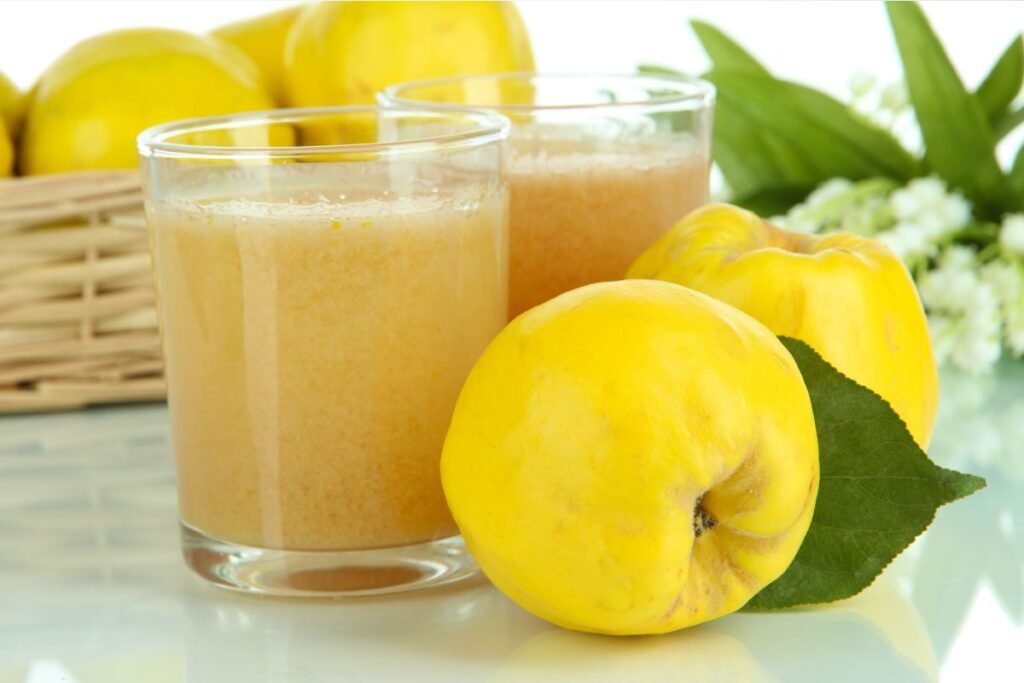
Japanese Quince Syrup
Another traditional method of processing Japanese quince is making syrup from its juice. You can prepare Japanese quince syrup in two ways. The leftover dried slices of Japanese quince from the syrup-making process are a delicious and nutritious snack.
The first method:
- Slice into thin pieces of washed and de-seeded Japanese quince.
- Place the slices into jars so they fill about one-third of the jar.
- Cover the slices with sugar (use a ratio of 1 kg of Japanese quince to 1.5 kg of sugar).
- Let the sugared Japanese quince sit at room temperature for a week.
- Strain the resulting juice, pour it into a pot, and heat it for 5 minutes.
- Pour the hot syrup into airtight bottles or jars, cool at room temperature, and store in the refrigerator.
Second method:
- Wash and de-seed the Japanese quince.
- Extract the juice.
- Pour the juice into a pot and mix it with sugar (1 liter of juice to 1.5 kg of sugar).
- Heat the juice and sugar mixture over low heat until the sugar dissolves completely and the syrup thickens.
- Pour the hot syrup into airtight bottles, cool at room temperature, and store in the refrigerator.
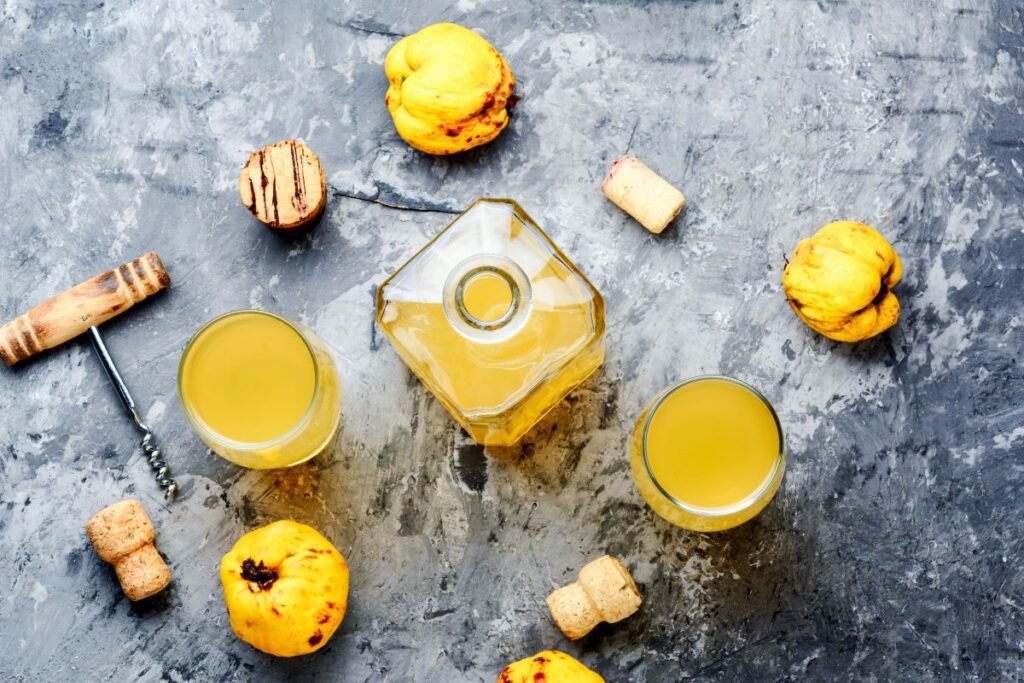
Who Should Avoid Japanese Quince Juice
For most healthy adults, Japanese quince juice is safe to consume. It can even replace lemon juice for those who are intolerant to lemons. However, in some cases, adverse effects may occur when taking Japanese quince juice.
Firstly, individuals allergic to apples, pears, apricots, plums, or peaches should take caution. Japanese quince is related to these fruits, so it may also cause intolerance. If you experience allergic symptoms such as itching, shortness of breath, or rashes after consuming Japanese quince juice, seek medical attention immediately.
Additionally, the specific fibers found in Japanese quince juice may interfere with the absorption and effectiveness of certain medications. If you are taking medication, avoid consuming Japanese quince juice 1–2 hours before or after taking your medicine.
Sources:
- https://www.sciencedirect.com/science/article/abs/pii/S0308814622013243?via%3Dihub
- https://www.healthline.com/nutrition/what-is-quince-fruit
- https://draxe.com/nutrition/quince-fruit
Associative photos © Canva
